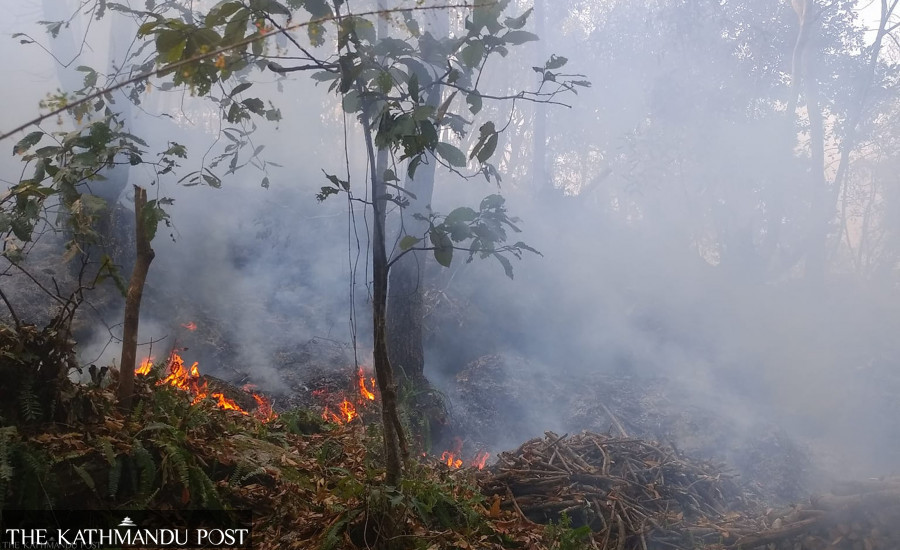
On Sunday, at least 103 forest fire incidents were recorded across the country, mostly in the western part. The number of fire incidents is expected to rise in the coming days throughout the country, as the mercury is rising with a little chance of precipitation in the next few days.
Experts say that the general public as well as agencies concerned should be cautious, as forest fires not only destroy the forest but also pose a serious threat to human life and property as well as wildlife.
“There may have been more forest fires in the western region but even the eastern region is witnessing such incidents,” said Sundar Sharma, an under-secretary at the National Disaster Risk Reduction and Management Authority under the Ministry of Home Affairs. “We all should be careful and take precautions, as the incidents can happen anytime and at any place.”
Over 2,400 fire incidents have been recorded in the last one year, which killed at least 100 people and 432 cattle, according to data compiled by the authority. Property worth over Rs2 billion was lost. Health and environment consequences of the fire incidents have yet to be assessed.
Officials said details of the losses will not be known immediately, as fire incidents have been ongoing in many places throughout the country.
“There is no possibility of rainfall in the next three days,” said Hira Bhattarai, meteorologist at the Meteorological Forecasting Division under the Department of Hydrology and Meteorology. “Temperature has been rising, and there is no moisture in the air to cause rainfall.”
Dry conditions and higher temperatures increase the likelihood of fire incidents, experts say.
Wildfires start from March in Nepal, when farmers burn the remains of crops on the fields. Such incidents are reported until mid-May. In the last week of March also, haze covered the Kathmandu Valley. Open burning and incidents of forest fire were blamed for the worsening air quality then. The last week of April is considered the peak time for forest fires in Nepal.
Environmentalists say that growing incidents of forest fires are a serious problem, which have huge social, environmental and economic impacts.
Due to lack of rainfall and growing fire incidents, pollution level worsens in this season. Last year too, authorities concerned had issued a red alert and enforced school closure for four days to lessen adverse effects of rising air pollution on students’ health.
Doctors say poor air quality causes short- and long-term effects on public health. Bad air quality can cause pneumonia, bronchitis, conjunctivitis, skin allergy, stroke and heart problems, among others, in the short term, and ulcers and cancer of the lungs and intestine, kidney disease and heart problems in the long-run.
Experts say human negligence is responsible for the majority of fire incidents in Nepal.
“Raising awareness about the consequences of deliberately causing forest fires, and penalizing those involved in the incidents, could make a huge difference to lessen incidents of fire,” said Bhusan Tuladhar, an environmentalist. “Strengthening local level governments, imparting training to the locals, providing them the necessary kits to deal with possible fire incidents, and building artificial ponds, are among the ways to deal with fire incidents.”
But there is neither institutional mechanism nor policies for directly handling wildfires.
Officials say controlling wildfire incidents is the responsibility of local governments, but most of them are ill-equipped.
“As hundreds of people are dying every year in fire incidents and property worth billions are getting destroyed, authorities concerned should not underestimate the seriousness of the problem,” said Bhupendra Das, an air quality and clean energy specialist.













